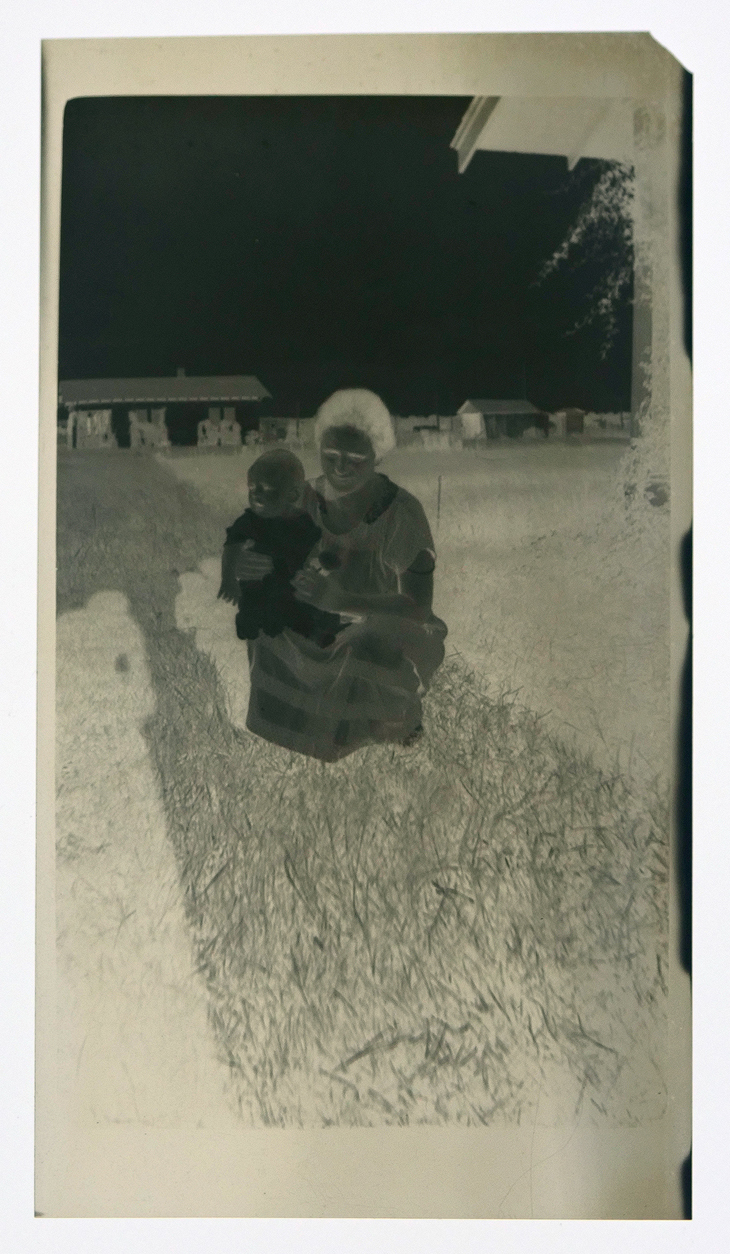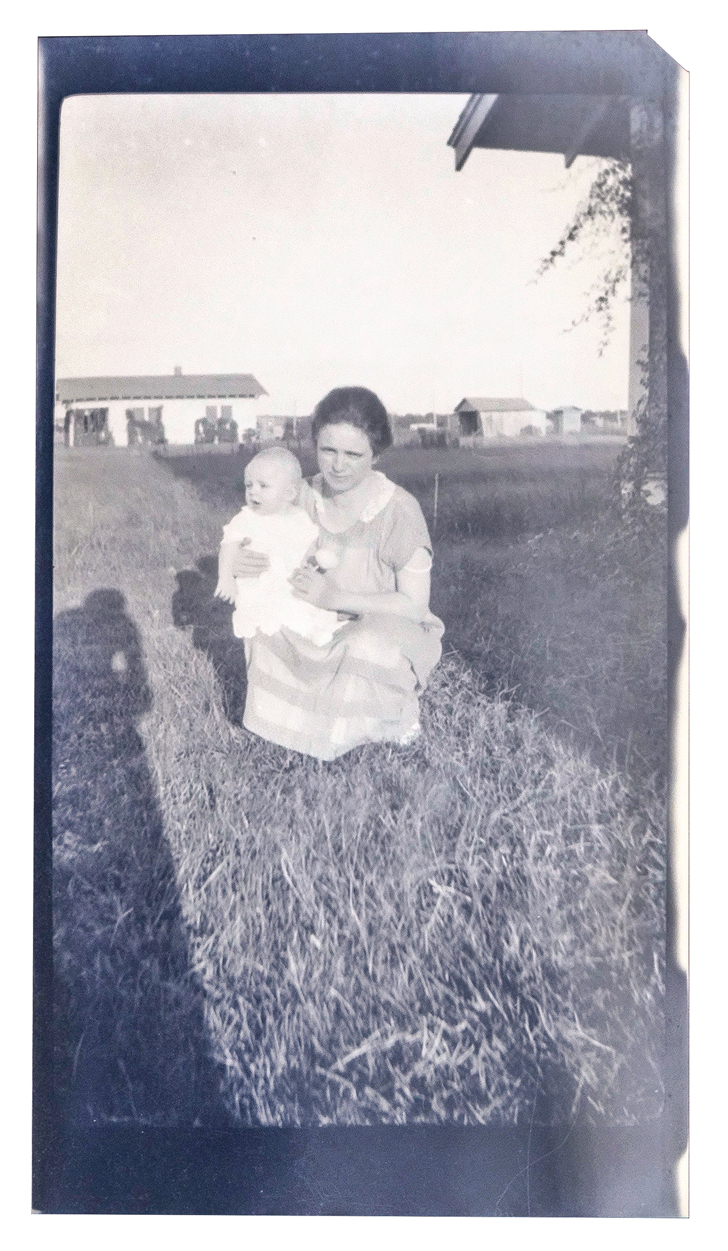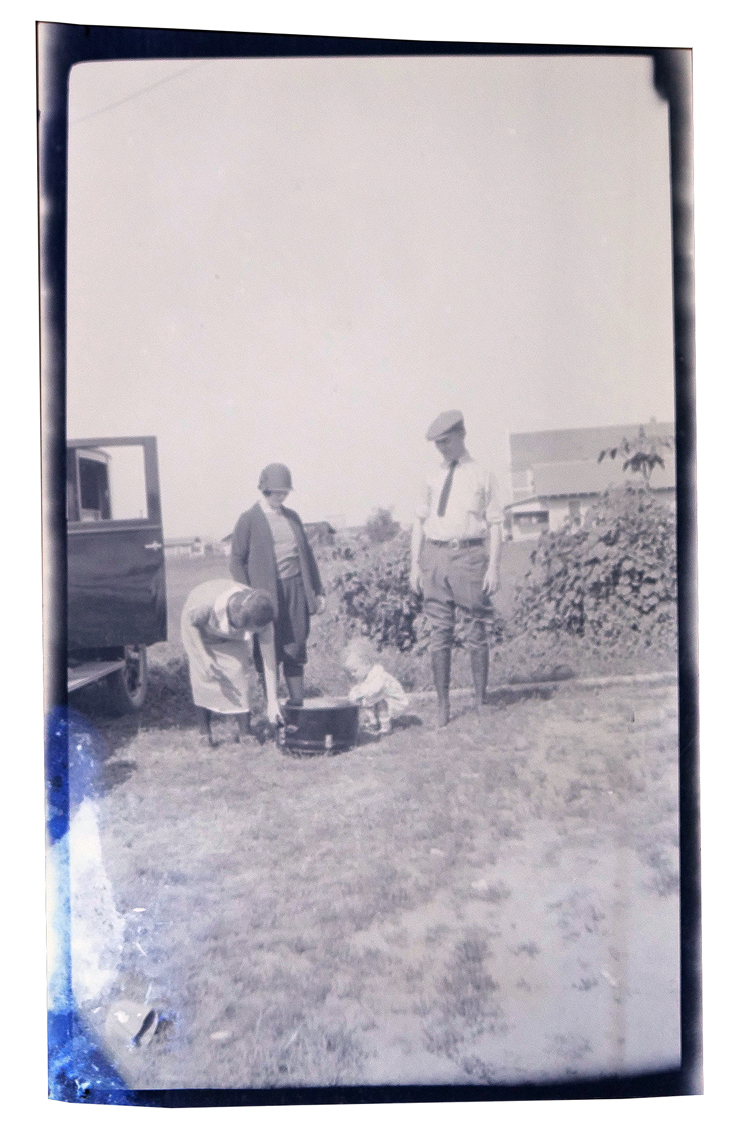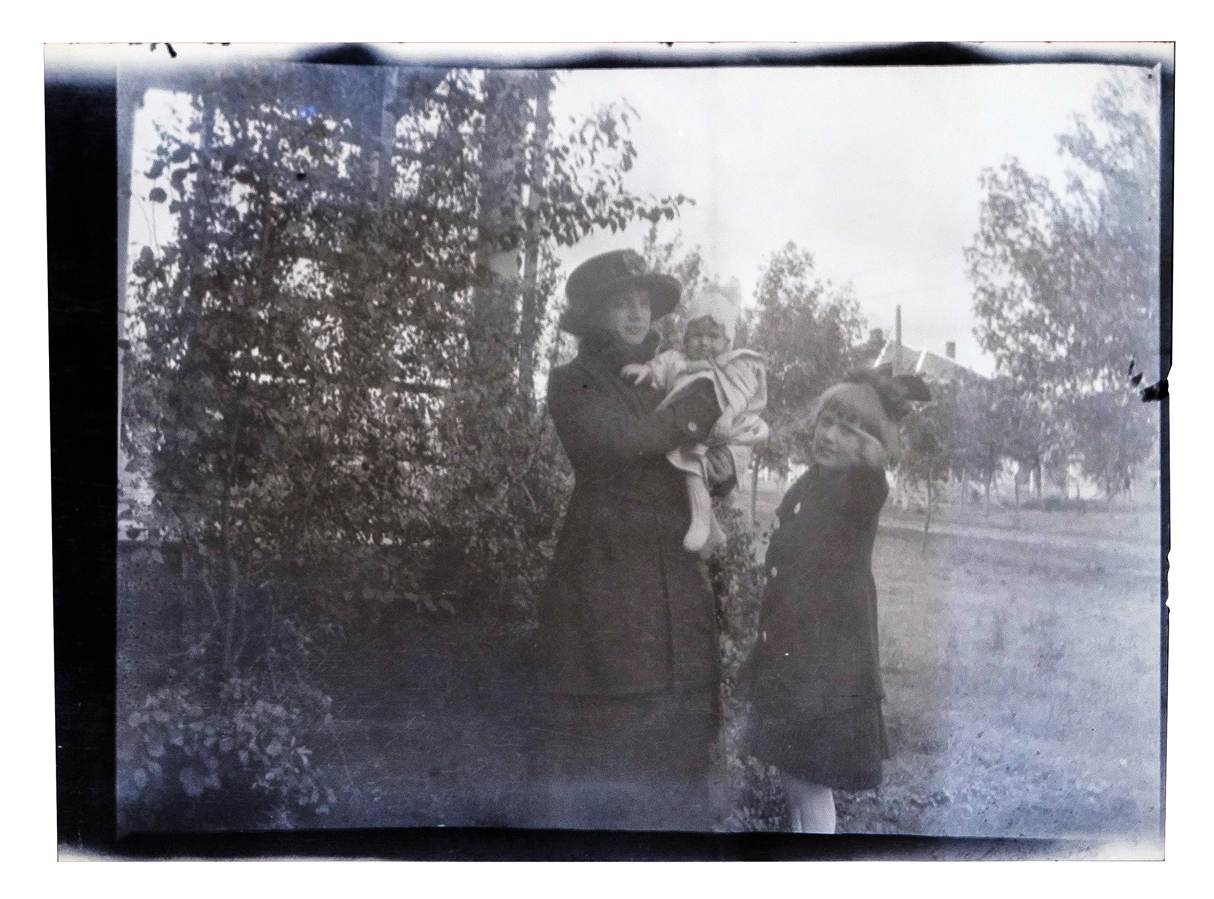Any guesses as to the dates of these images?
I love to dig through piles of old photographs at antique malls and estate sales. In this case, I found several envelopes filled with old film negatives from decades ago.
Looking at the clothing and hairstyles in this set of negatives, I would have guessed the dates to be the 1930s or early 1940s. But based on the timeline I received from the the Tulsa Historical Society & Museum (below) — using the address of the studio as a clue — it appears the negatives could date from the late 1920s or early 1930s. However, Tulsa Historical Society & Museum archivist and curator Luke Williams dates the envelope to probably around 1919-1920.
Monroe Studio, Tulsa, Oklahoma
When I acquired them, the negatives were still held in the brown folding envelope from Monroe Studio in Tulsa, dated 5-22, which I assume to mean May 22, with no year specified. The cost of negative and prints totaled 39 cents. The customer name on the envelope was listed as Williams, with separate lines listing Brown and Wynona. The notes on the envelope call for developing one roll of 116 film, with six exposures.
At the time our negatives were processed, Monroe Studio was located at 231 East Third Street in Tulsa, although the timeline in following paragraphs lists all the studios locations in Tulsa. Monroe Studio was a portrait studio which apparently also handled film developing and photo processing.
Monroe Studio was in business from 1915 through 1980.

Monroe Studio is somewhat unusual for its time, because it was started by a female photographer named Olive “Ollie” Monroe in Tulsa in 1915, after having operated photo studios in Kansas since the 1890s. According this article, Ollie Monroe had left Tulsa for California by 1920, and the envelope states that the studio was operated by “C.A. Burritt, Successor.”
History of Monroe Studio in Tulsa
What follows is a verbatim timeline of Monroe Studio in Tulsa, provided in an email from Luke Williams, Archivist & Curator of Collections at the Tulsa Historical Society & Museum
Editor’s note: I believe the address numbers listed below may be unintentionally transposed, since our printed envelope shows the address at 231 E. Third Street, not 213. The address today appears to be a large parking lot.
“Mrs. Ollie H. Monroe, the widow of John Moore, operated a photography studio in Tulsa, OK as early as 1915. The first reference to the studio occurs in a newspaper article from November 22, 1915, which lists the studio at 102 ½ South Main Avenue, with Mrs. O. H. Monroe, proprietrix.
By 1917, the Monroe Studio was located in the Reneau Building at 213 East 3rd Street. In May 1919, photographer Chester Alan “Chet” Burritt (1881-1959) became the owner of the business by obtaining a mortgage for $3,000 to Ollie Monroe for photograph office furniture and fixtures. Burritt photographed adults, while his associate, Ed Miller, photographed children. By 1925, the business had two studios on 3rd Street: 213 East 3rd Street and 1 East 3rd Street. By 1926, Burritt’s wife, Florence A. Burritt, was also listed as one of the studio photographers.
In 1932, the studio location moved to 309 Orpheum Building, located at 20 East 4th Street, a location the studio occupied for the next thirty years.
In 1954, Joseph David Ward (1911-1986) and wife, Mildred Arlene Ward (1915-2010), purchased the studio and ran it for the next twenty-five years.
Former owner Chet Burritt died January 18, 1959, and in his obituary he was listed as the “dean of Tulsa portrait photographers.”
In 1963, the Wards moved the studio to 3637 South Harvard Avenue, where it remained for the next sixteen years. In 1978, the Monroe Studio photographer was Jerry Cornelius. The next year, Ed Gungor became photographer at the studio’s new location, 1637 South Harvard Avenue.
Nellie Fraiteg managed the studio in 1980, the year it closed.”
Thanks to Mr. Williams for the detailed information and for dating the envelope.
The Negatives and the Positives
Below are some of the negatives along with my conversions to the black and white positive images. These negatives are larger than 35mm film and a different aspect ratio than modern medium format film. They are 2.5 x 4.5-inches, which equates to 116 film, giving the photographer 6 frames per roll of film. That can be confirmed by the handwritten note on the envelope. According this this website, 116 film was introduced in 1899, and discontinued in 1984.








This film negative below is larger than the others, a whopping 3.25 x 5.5-inches. This would have been from a roll of 122 format film — also called postcard format — introduced in the early 1900s and discontinued in 1971. (Source)


100 years ago, the 1920s were a period of change and exuberance after the end of WWI and before the great depression. America had gained predominance in the world. Stock markets rallied. Women gained the right to vote. Prohibition made alcohol illegal, creating black market demand that lead to the gangster era and the likes of Al Capone. People began owning telephones and radios for the first time, and on the radio was a new kind of American music — jazz. It was the era of the resurgence of the KKK, anti-immigrant sentiment, and labor unrest. It was also a time when more people began owning cards, creating demand for more and better roads.
Sources and Links
Alex Luyckx. “Film Formats – WTS? (What the Size).”
Photographs, Pistols & Parasols. “The Journey of Ollie Monroe.“
Williams, Luke. Archivist & Curator of Collections at the Tulsa Historical Society & Museum

2 comments